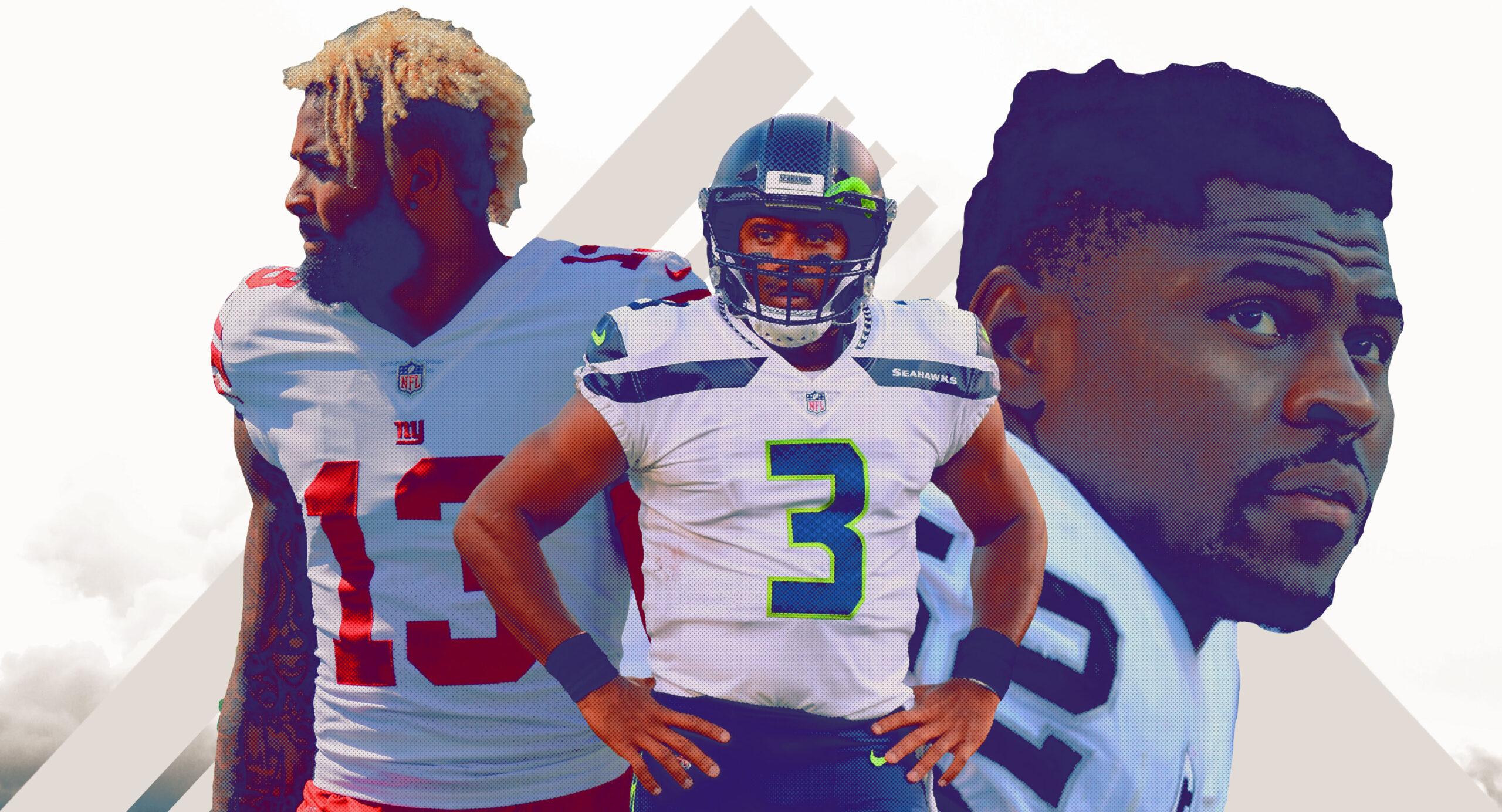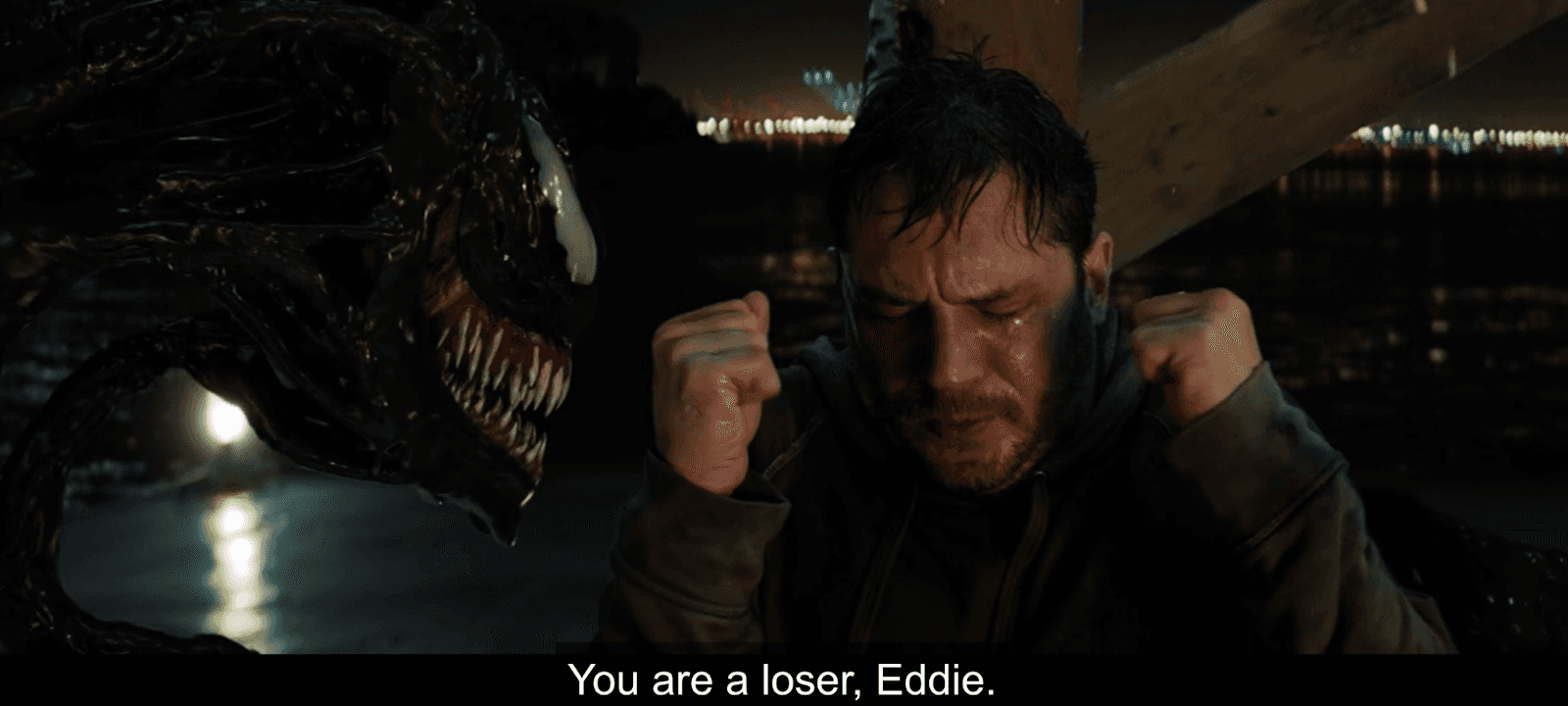NFL Preseason Power Rankings, Part 2: The Fall of the Seahawks and the Rise of the Bears
Will the Khalil Mack trade push Chicago into contention? Does Seattle have anything beyond Russell Wilson? And what should we expect from Saquon Barkley as a rookie?My 2018 preseason power rankings kicked off Monday with the eight teams I see finishing toward the bottom of the league. As I noted in that installment, picking those clubs was more difficult than it was in years past, since fewer teams look like recipes for disaster heading into this fall.
Assembling Part 2 of the rankings (here are parts one, three, and four) was equally challenging. This tier is filled with teams in transition that have major question marks. Some are nearing the end of an era; others have newfound reasons for optimism but have yet to see their plans unfold. For the most part, the franchises in this section have a defined ceiling; they could be good, but each has at least one factor that should keep it from joining the league’s best.
24. Seattle Seahawks
2017 Record: 9-7
2017 DVOA: 14th on offense; 13th on defense
Best-Case Scenario: Only a select few quarterbacks can completely mask their roster’s ills. Tom Brady will almost certainly drag the Patriots to the top of the AFC East again this season. Aaron Rodgers has kept countless people employed in Green Bay over the past 10 years. Drew Brees single-handedly kept the Saints afloat for years despite historically awful defenses. Russell Wilson is in that camp, too, and he’s the only reason the Seahawks aren’t even lower on this list.
Wilson is a magical force, capable of surviving poor offensive line play, conjuring a rushing attack, and summoning chunk plays down the field at will. Without him, the Seahawks would have one of the worst offenses in football. With him, Seattle could field a potent attack yet again.
Optimism about the Seahawks’ point-scoring ability continues with the departure of offensive line coach Tom Cable. Why Cable retained his job in Seattle for years and is still employed by an NFL team (he’s now the offensive line coach with the Raiders) is baffling on both human and practical levels. Two different women say Cable has a history of domestic abuse. And the offensive lines he oversaw on the Seahawks were regularly atrocious. By replacing Cable with real-life NFL coach Mike Solari, the Hawks’ line—even though its personnel hasn’t undergone many significant upgrades—should turn in its best performance in years.
With better play up front and a potentially revived running game—paced by a healthy Chris Carson and 2018 first-round pick Rashaad Penny—the Seahawks could see a jump on offense that would keep them afloat despite the talent attrition the team has experienced on defense.
Worst-Case Scenario: One of life’s cruelest lessons is that nothing gold can stay. Greatness in all forms eventually comes to an end, no matter how much we try to fight it. Go watch Taxi Driver and then queue up Dirty Grandpa—even Robert De Niro isn’t immune to the ravages of time. And neither are the Seahawks.
Since 2012, Seattle has been the NFL’s model franchise west of New England. It was the first team to perfect the practice of maximizing a rookie QB contract under the 2011 CBA, and it hit home run after home run in free agency in the form of guys like Michael Bennett and Cliff Avril. Head coach Pete Carroll and general manager John Schneider also mastered the draft, selecting the likes of Earl Thomas, Richard Sherman, and Kam Chancellor, and the team extended each of those players years before they hit free agency, keeping their prices down and allowing the franchise to compete for championships annually.
Sadly, those days are over. Chancellor retired this offseason amid concerns about his injured neck. Sherman was released in March for financial and health reasons. Bennett was traded to the Eagles. Avril is off the team as well. And while Thomas is still on the roster, he hasn’t been shy about seeking a trade.
The Seahawks as we know them are done, and that may soon affect the Schneider-Carroll partnership, which has defined this franchise over the past eight years—without the defense carrying this team, Carroll’s squad is in trouble. After Doug Baldwin—who admitted last week that he’s dealing with a knee injury that may keep him at 80 percent this season—Seattle’s receiver depth chart is a wasteland. The Seahawks gave Tyler Lockett, a guy who caught 45 passes for 555 yards last season, a three-year, $31.8 million contract earlier this week. That decision has no basis in reality—but I guess Wilson needs someone to throw to who isn’t Baldwin. If Wilson gets hurt for any stretch of time, this is a bottom-three roster and the Seahawks are in contention for next year’s no. 1 pick in the draft.
Stat of Note: Minus-78.0 percent. That was the Seahawks’ rushing DVOA in the red zone last season, according to Football Outsiders. It was comfortably the worst mark in the league, and the second-worst finish in 30 years.
Breakout Player: Shaquem Griffin. With the lingering injury to K.J. Wright, there’s a chance that Griffin will get on the field sooner rather than later. Count me among the many, many people rooting for him.
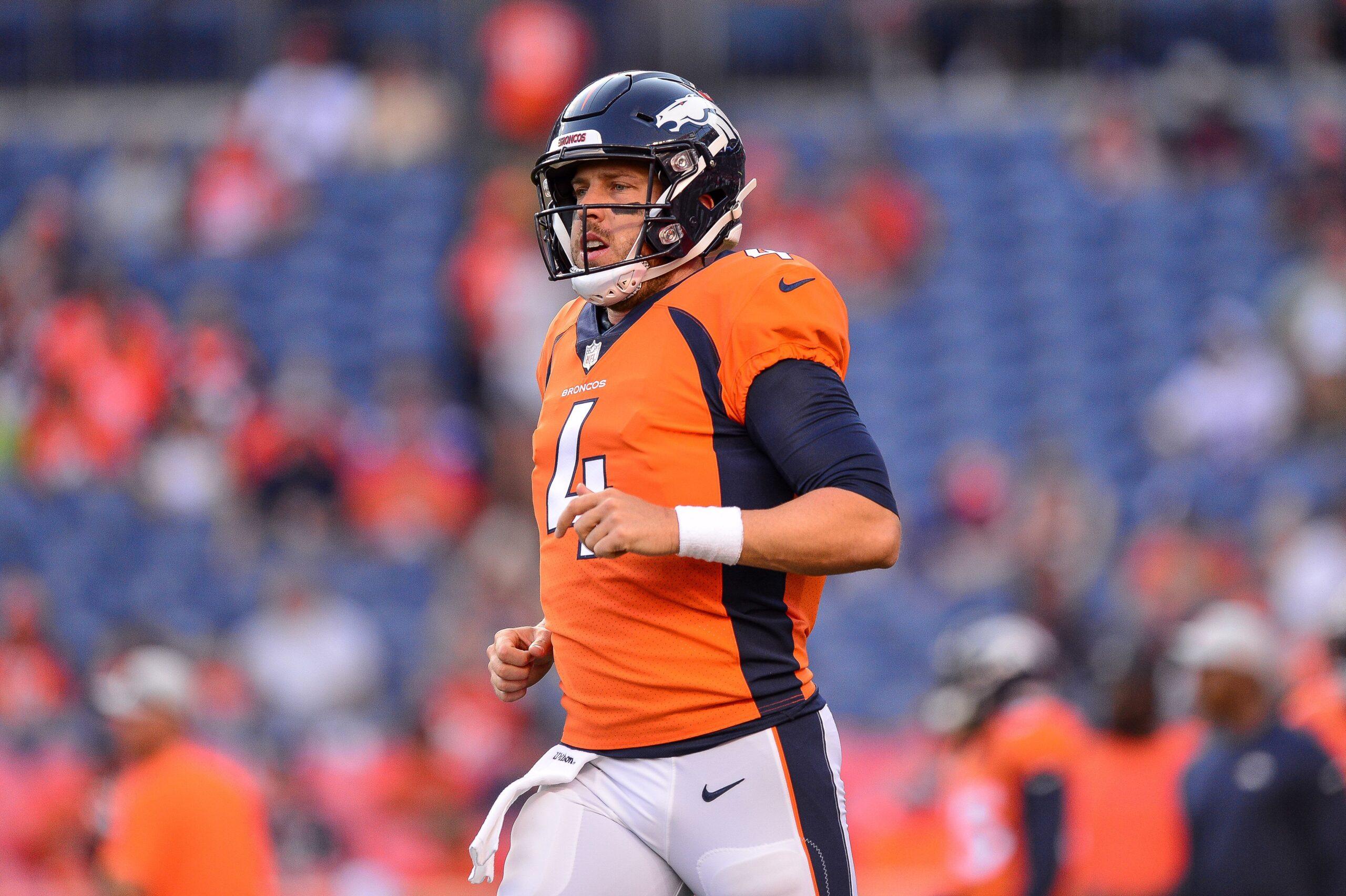
23. Denver Broncos
2017 Record: 5-11
2017 DVOA: 31st on offense; 10th on defense
Best-Case Scenario: The Broncos’ quarterback play last season was as dire as it gets in the NFL. Great quarterbacks may elevate the roster around them, but awful ones can tear an entire team down—and that’s what Denver’s combination of Trevor Siemian, Brock Osweiler, and Paxton Lynch did. The team’s offensive line looked terrible as it tried to block for a trio of indecisive, statuesque passers. Demaryius Thomas caught just 83 passes for 949 yards with five touchdowns, his worst statistical season since 2011. All three of the Broncos’ primary ball carriers finished with a negative DVOA.
Denver’s best hope to improve this season is rooted in making the all-important leap from awful to solid quarterback play. This spring, on the heels of his unlikely career year in Minnesota, 30-year-old Case Keenum signed a two-year, $36 million deal with the Broncos. Keenum may never be able to replicate the magic he found in 2017, when he led the Vikings to the NFC championship game, but the traits he displayed could go a long way toward helping Denver return to competence on offense. Keenum was pressured on 39.3 percent of his dropbacks last season, according to Pro Football Focus, the third-highest rate in the NFL, yet only Philip Rivers was sacked less frequently. No quarterback was better at negating pressure, and Keenum’s presence should provide a boost to a shaky offensive line. Garett Bolles, the team’s 2017 first-round pick, was set to take a step forward at left tackle this season anyway; Keenum’s ability to escape pressure should help jump-start the process.
Keenum had the benefit of playing with Adam Thielen and Stefon Diggs in Minnesota, and the Broncos have a standout pair of receivers as well, in Thomas and a healthy Emmanuel Sanders. That duo and the addition of third-round pick Royce Freeman at running back should give Denver a dangerous group of skill-position players for Keenum to lean on. And if fifth-overall pick Bradley Chubb can step in immediately opposite Von Miller and help the Broncos’ pass rush return to its 2016 glory, this team could become relevant quickly.
Worst-Case Scenario: NFL history isn’t exactly riddled with quarterbacks who made massive, sustained leaps nearly a decade into their careers. Keenum was brilliant for Minnesota, but he was also playing with two of the best contested-catch receivers in football. Not even the combination of Thomas and Sanders will be able to replicate the number of marginal Keenum throws that were turned into giant gains last year.
By the end of this season, the Broncos may look back at the 2018 draft and wonder what possessed them to take a pass rusher over a quarterback with the fifth overall pick. Considering how poorly Denver’s offense fared last year, it’s tempting to think even a slight upgrade at QB could transform the team’s prospects on that side of the ball. But Keenum comes with a hard ceiling, and even though fielding an average offense would be a considerable improvement, a middle-of-the-pack group won’t be enough to alter Denver’s fortunes. Plus, the defense’s slip from league best to merely very good in 2017 was no fluke. The Broncos’ defensive personnel isn’t what it was during their Super Bowl run, and though Chubb may be destined for stardom, this group needs more than just another elite edge rusher to rejoin the top tier of NFL defenses.
Stat of Note: 18 percent. That’s how often opponents used play-action against the Broncos’ defense last season, which ranked 31st in the NFL according to the Football Outsiders Almanac. That followed two straight seasons during which Denver ranked dead last in that statistic. Fear of the Broncos’ pass rush can change a team’s entire offensive approach.
Breakout Player: Bradley Chubb. Top-five picks don’t get much safer than Chubb. He tallied 10 sacks in each of his final two seasons at NC State and recorded at least 20 tackles for loss both years. At 269 pounds, he’s got plenty of bulk to hold up against the run in the NFL, and he should have no problem converting speed to power against stronger tackles. Watching him and Miller week in and week out is going to be fun.
22. Cincinnati Bengals
2017 Record: 7-9
2017 DVOA: 22nd on offense, 17th on defense
Best-Case Scenario: Credit the Bengals for knowing where they needed to improve this offseason. Cincinnati’s offensive line was a mess last year after the team let Andrew Whitworth and Kevin Zeitler walk in free agency, and both Cedric Ogbuehi and Jake Fisher have fallen far short of expectations after going in the first and second rounds of the 2015 NFL draft. But this spring, Cincinnati’s decision-makers finally admitted their mistake. The Bengals traded for talented but injury-plagued Bills left tackle Cordy Glenn and spent their first-round pick on Ohio State center Billy Price.
The baseline for the offense should be much higher with better protection, but the upside is far more uncertain. Cincinnati’s scoring potential is tied up in the development of the team’s two top 2017 draft picks: running back Joe Mixon and receiver John Ross. Mixon had a forgettable rookie season behind the Bengals’ shoddy line, and Ross’s year was a complete waste. If Mixon can find his footing with more talented blockers up front, and Ross can give Cincinnati some pop on the outside, the offense could find a new gear without adding any significant pieces to its skill-position group.
Cincinnati will be banking on similar in-house improvements on the other side of the ball. Six of the Bengals’ projected defensive starters were drafted within the last three years, including 2018 second-round pick Jessie Bates III, who will step in as the starter at free safety after the team released George Iloka last month. Corner William Jackson III was a revelation as a first-year starter in 2017, and last year’s fourth-round pass rusher Carl Lawson showed plenty of flashes as a rookie. Add in guys like Geno Atkins and Carlos Dunlap up front, and this unit has enough pieces to be back in the top half of the league by season’s end.
Worst-Case Scenario: The worst part about the Bengals’ outlook is that, while it’s hard to imagine this team being a train wreck, it’s also hard to imagine it being very good. Even with the additions on the offensive line and the possible increased contributions from Mixon and Ross, any scenario in which Cincinnati returns to contender status this season seems far-fetched. By now, we know what a team quarterbacked by Andy Dalton looks like, and just adding Glenn and Price won’t change that.
It’s tempting to project a better season for Mixon with Price in the fold, but even taking into account Cincinnati’s awful run blocking last year, Mixon’s numbers were still underwhelming. Among the 28 backs who recorded at least 50 percent of their team’s carries, Mixon finished dead last in Pro Football Focus’s Elusive Rating and 25th in yards after contact per attempt. The Bengals hope that a step forward for Mixon and positive contributions from Ross would give their sputtering offense a spark it’s been missing over the past few seasons, but this version of Cincinnati’s offense may be a slightly tweaked cousin of the units we’ve come to expect from Marvin Lewis’s team. Most signs point to yet another middling season for Dalton and Co.
Stat of Note: 18. That’s how many tackles Mixon broke on 178 carries as a rookie, according to PFF. Among the same group of 28 backs who registered at least 50 percent of their team’s carries last season, only Orleans Darkwa and Samaje Perine finished with fewer.
Breakout Player: Billy Price. During his career at Ohio State, Price proved to be an ass kicker with a contagious mentality that can infect an entire offensive line. Huge improvements at quarterback are the quickest way to transform an offense, but bringing in a presence like Price at center may be a close second.
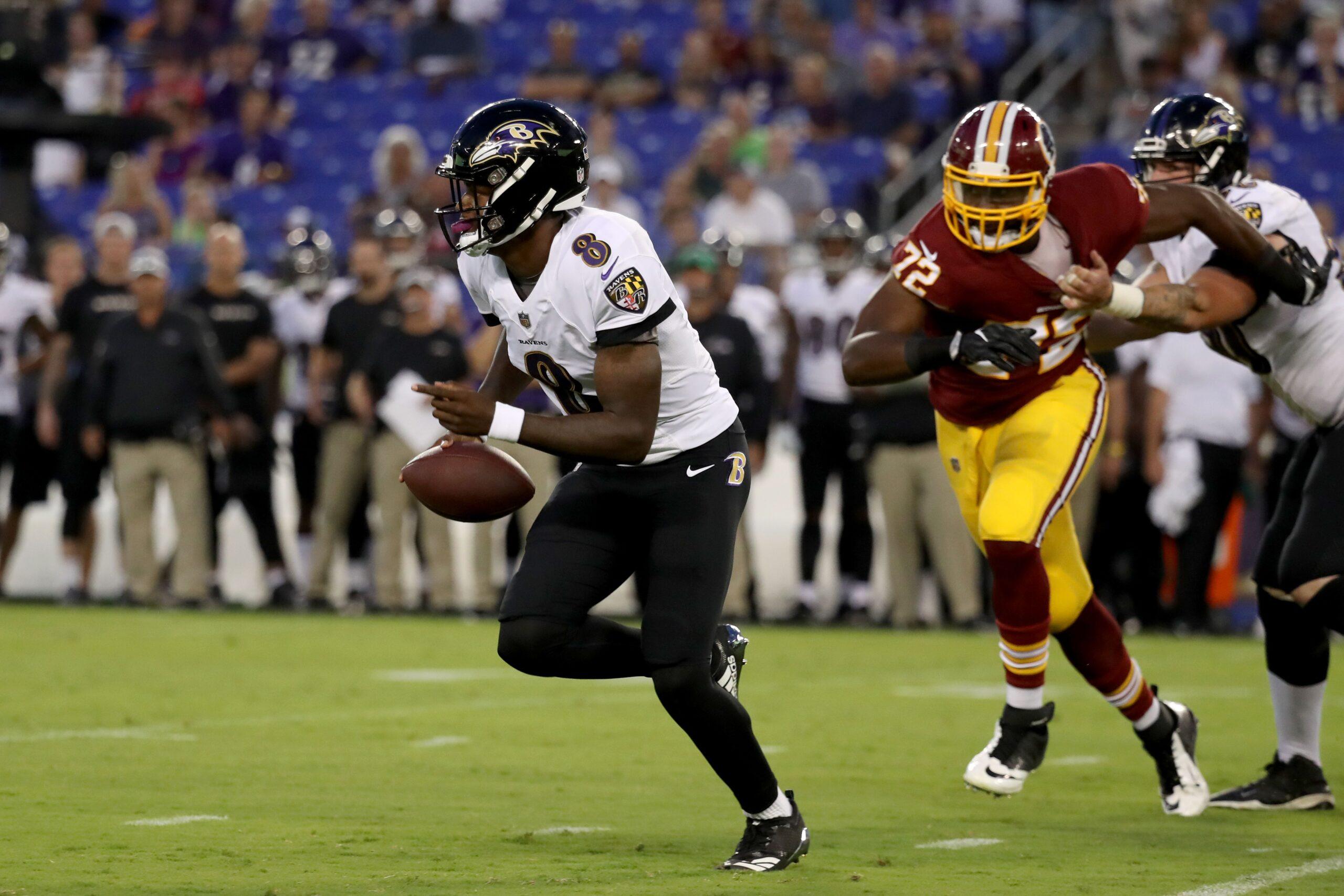
21. Baltimore Ravens
2017 Record: 9-7
2017 DVOA: 21st on offense; third on defense
Best-Case Scenario: Baltimore’s defense is a complete group without any glaring weaknesses. The Ravens have quality talent at every level, headlined by a pair of great safeties (Eric Weddle and Tony Jefferson), stout interior defensive linemen (Brandon Williams and Michael Pierce), and standout linebackers (C.J. Mosley and the still-kickin’ Terrell Suggs). Cornerback Jimmy Smith will miss the first four games of this fall after testing positive for performance-enhancing drugs, but Baltimore could consistently stifle opposing quarterbacks when he rejoins the fold.
If continuity is the theme on Baltimore’s defense, total overhaul best sums up the offense. That starts with the front office’s decision to trade back into the first round of this spring’s draft to snag superstar Louisville quarterback Lamar Jackson with the 32nd overall pick. The move indicated that the Ravens believe Joe Flacco’s time with the franchise is running out, even if the torch won’t fully be passed to Jackson until next season.
For now, GM Ozzie Newsome did all he could to coax the most out of Flacco. The Ravens’ top three finishers in targets (Jeremy Maclin, Mike Wallace, and Ben Watson) are all gone, replaced by a new stable of pass catchers: Michael Crabtree, Willie Snead, and John Brown. Newsome’s decision to remake his receiving corps, including handing Crabtree a three-year, $21 million deal, spelled the end for 2015 first-round pick Breshad Perriman, who was released after tallying 43 receptions over three injury-riddled seasons. Newsome followed his wide receiver shopping spree by grabbing not one, but two tight ends in the first three rounds of the draft. Baltimore took South Carolina’s Hayden Hurst 25th overall before nabbing Oklahoma’s Mark Andrews at 86. Hurst will miss the start of the season after going down with a stress fracture in his foot, but should add to a reliable receiving arsenal when he returns.
Picking up running back Alex Collins off the scrap heap last year after he was cut by the Seahawks turned out to be one of 2017’s best finds. Collins averaged 4.6 yards per carry for the Ravens behind a piecemeal offensive line that played almost the whole season without the league’s best guard, Marshal Yanda. Both Collins and Yanda are healthy this season, meaning the Ravens should have a potent ground game immediately.
It’s also worth mentioning that the Ravens consistently get more from their special teams than any franchise in football. They finished first in weighted special teams DVOA in 2017, powered largely by the outsize abilities of kicker Justin Tucker. Tucker led the NFL in Football Outsiders’ kicking metrics for the second straight season last fall.
Worst-Case Scenario: There may be no saving Flacco at this point. Baltimore’s passing game was awful last year, and he had a large hand in it. In a perfect world, Flacco would experience one last resurgence in 2018—powered by a revamped pass-catching crew and motivated by Jackson’s arrival—before Baltimore says goodbye next spring. The more likely outcome, though, is that the Ravens will look at their watches all fall and wait for Jackson’s takeover to begin.
A team with the current iteration of Flacco, who will make a staggering $24.7 million this season, can go only so far—especially if the defense is unable to do the heavy lifting. If that unit sputters early without Smith, Baltimore could have another forgettable season in store. An underrated loss this offseason was that of defensive coordinator Dean Pees, who quietly spent six years overseeing quality defenses before retiring and unretiring to join the staff in Tennessee. Former linebackers coach Don Martindale will get the first crack at the job with Pees gone, and there’s no guarantee that the transition will be smooth. Martindale’s last tenure as a coordinator came with the Broncos in 2010, when Denver finished 30th in defensive DVOA and dead last in points allowed.
Stat of Note: 2.98. That was Collins’s average yards after contact per carry last season, the seventh-best mark in the league among backs who had at least 50 percent of their team’s rushing attempts, according to Pro Football Focus. Collins broke 32 tackles on just 212 carries.
Breakout Player: Marlon Humphrey. The 2017 first-round pick was excellent after breaking into the starting lineup down the stretch, with the cornerback having a stellar showing against Pittsburgh’s Antonio Brown. Humphrey’s continued ascendence would give Baltimore a shutdown pair of corners when Smith returns.
20. Washington Redskins
2017 Record: 7-9
2017 DVOA: 20th on offense; 11th on defense
Best-Case Scenario: Of all the possible outcomes that could have followed Washington’s Kirk Cousins contract debacle, Alex Smith taking over at quarterback is a desirable result. The price to acquire Smith wasn’t cheap—the front office sent the Chiefs a third-round pick and excellent slot corner Kendall Fuller and then handed Smith a $94 million deal with $71 million in guarantees—but the veteran will give Washington a quality answer at the position. To round out the receiving corps, the team signed former Seahawks deep-ball artist Paul Richardson to a five-year, $40 million deal with $16.5 million guaranteed. With Richardson and 2016 first-round pick Josh Doctson on the outside, Washington has a pair of receivers with a flair for the spectacular.
Losing rookie running back Derrius Guice to a torn ACL in August was a considerable blow, but getting receiving back Chris Thompson healthy again after he missed the final six games of last season with a broken fibula should provide this unit with an element that was sorely lacking late last fall. Thompson’s leg injury paired with a rash of offensive line injuries to devastate the offense: Left tackle Trent Williams dealt with knee problems for much of the year and missed six games; right tackle Morgan Moses had ankle and knee injuries in the second half of the season; center Spencer Long was placed on injured reserve before the team’s Week 11 trip to New Orleans; and left guard Shawn Lauvao joined him on IR a week later with a neck injury. In the past, Washington’s line has been a strength. If this group can stay healthy, it could be again.
Washington was similarly snakebit on defense, as 2017 first-round pick Jonathan Allen missed the final 11 games of the season with a foot injury. This season, he’ll be joined up front by fellow Alabama product Da’Ron Payne, who was taken 13th overall in the 2018 draft. Allen and Payne give Washington an imposing interior combination.
Worst-Case Scenario: Smith’s presence should prevent Washington’s offense from backsliding without Cousins, but questions remain about the team’s long-term outlook. It didn’t stumble into a cheap Cousins alternative before devising a plan for the future. Smith will make $18.4 million in 2018 before counting for more than $20 million against the cap in 2019 and ’20. He’s a sticker-price veteran whose contract inherently limits roster-building flexibility. With the 13th pick this spring, Washington would have needed to swing a trade to secure one of the draft’s top quarterbacks, and Arizona gave up only third- and fifth-round picks to jump from no. 15 to no. 10 to take Josh Rosen. Washington went with Smith as the win-now move.
The problem with that, given Washington’s roster, is win-now mode could mean a 10-6 campaign that maxes out in the wild-card round. If the offense can stay healthy in 2018 (a statement that applies to tight end Jordan Reed, although it’s safer to treat anything Washington gets from him at this point as a bonus), this group should be fine. Still, it’s tough to see it as anything more than a borderline top-12 unit from week to week.
And with the limitations of this defense, that might not be enough. Outside of Josh Norman, who remains an elite option on the outside, the roster’s cornerback group is barren. Players who are thrown into monster trades that also include draft capital are typically smaller pieces; that isn’t the case with Fuller, who was among the better slot corners in football last season. Payne and Allen should give the run defense a jolt this season, but this unit will almost certainly struggle to defend the pass.
Stat of Note: 19. That’s how many spots in the run defense DVOA rankings Washington fell after Allen went down with a Lisfranc injury in Week 6. It ranked 30th in run defense DVOA while he was out after ranking 11th over the first five games of the season.
Breakout Player: Da’Ron Payne. The Bama star should step in right away as a solid starter on the interior. He’s staggeringly athletic for a 319-pound guy and represents the type of presence Washington has lacked up the middle.
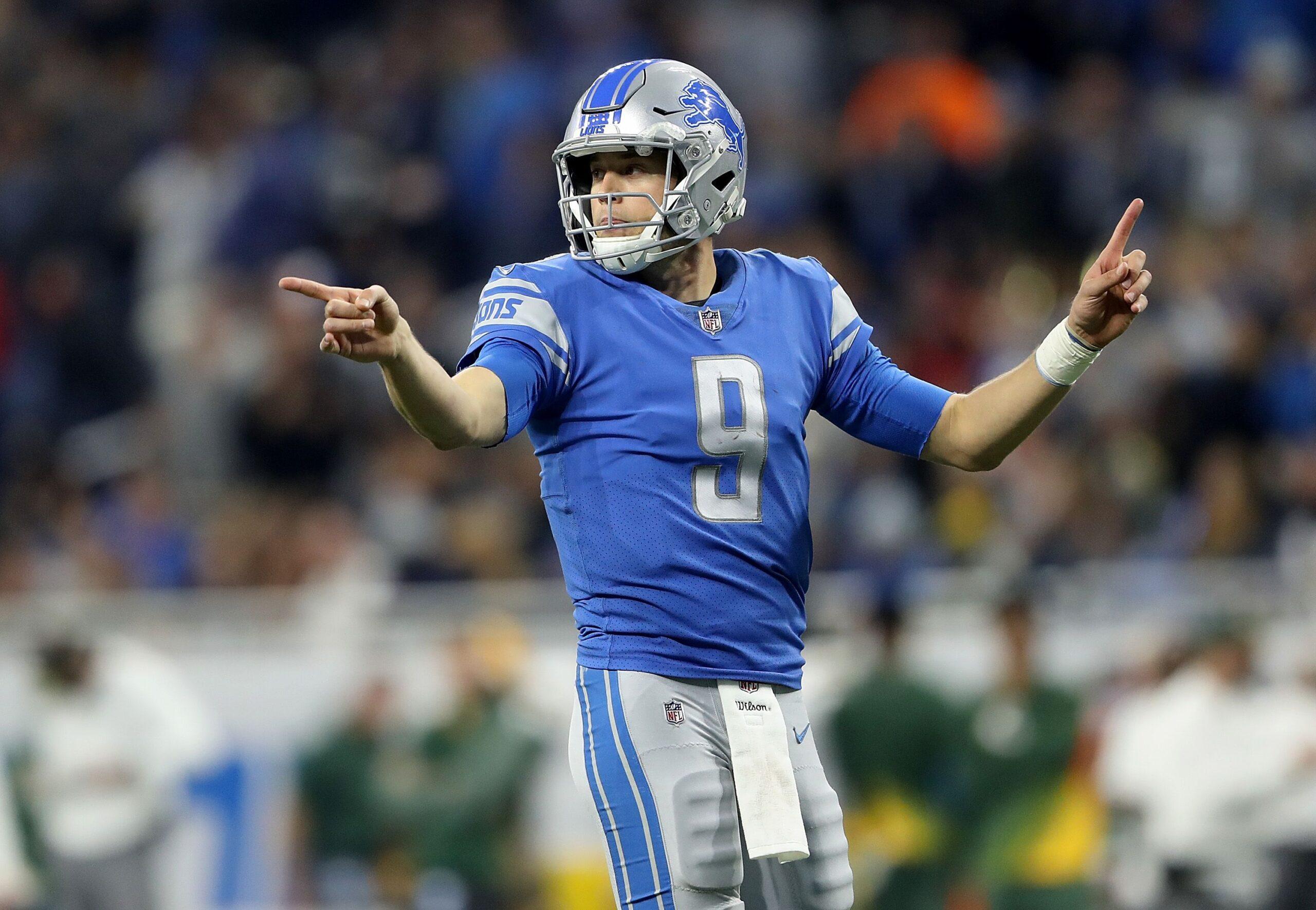
19. Detroit Lions
2017 Record: 9-7
2017 DVOA: 12th on offense; 19th on defense
Best-Case Scenario: First-year head coach Matt Patricia elected to retain offensive coordinator Jim Bob Cooter in hopes that the Lions can continue their progression on that side of the ball. The passing game is far and away the strongest aspect of this roster thanks to quarterback Matthew Stafford, a complementary trio of wide receivers (after-the-catch force Golden Tate, contested-catch master Marvin Jones, and tantalizing second-year talent Kenny Golladay), and running back Theo Riddick, who’s proved capable of slashing up defenses out the backfield. Stafford got improved pass protection last season with Detroit’s free-agent additions of T.J. Lang and Ricky Wagner. That trend could spill into this fall, as 2016 first-round pick Taylor Decker could make good on the potential he flashed as a rookie.
General manager Bob Quinn’s latest move up front was drafting Arkansas center Frank Ragnow in the first round. Ragnow will start at left guard and has the chance to elevate this ground game after yet another disappointing season. The Lions have gone four consecutive years without getting a 100-yard rushing performance from a running back. That doesn’t even seem possible. Along with taking Ragnow, the Lions snagged Auburn running back Kerryon Johnson in the 2018 draft. Johnson will immediately take over as the Lions’ primary runner, and he showed plenty of reasons for optimism during the preseason.
A functional running game is the last piece this offense needs to make the leap to the NFL’s top tier. If Detroit makes that jump and catches lightning in a bottle on defense, it should enter the conversation for a wild-card spot in a loaded NFC.
Worst-Case Scenario: The problem with that formula is that it puts almost all of Detroit’s postseason dreams on Stafford and the offense. It’s possible that a shift from department-store mannequin Jim Caldwell to Patricia at head coach will spark a franchise-wide spike that includes a step forward on defense, but the Lions seem set to reprise a unit that finished in the bottom half of the league in defensive DVOA. Detroit relied on plenty of luck in 2017: Only the Ravens’ defense averaged more takeaways per drive. Regression in that category could have nasty results.
This group isn’t a candidate to be like the 2017 Saints, who added two high-level starters in the secondary after ranking dead last in several 2016 statistical categories. Detroit’s defense features a familiar cast of characters, led by Ziggy Ansah (playing on the franchise tag), cornerback Darius Slay, and safety Glover Quin. Unless Patricia’s transformation involves literally transforming the guys on his roster into different people, expecting many gains isn’t wise.
Stat of Note: 83.3. That’s how many rushing yards Detroit has averaged per game in Stafford’s starts since his rookie season in 2009, according to the Football Outsiders Almanac. It’s the lowest mark for any quarterback with at least 80 starts since 2001.
Breakout Player: Kerryon Johnson. He’ll get every chance to infuse life into that dormant ground game. His lean frame brings concerns about his ability to hold up to a feature back’s workload, but the 206-pounder is a tough runner who withstood plenty of punishment at Auburn.
18. New York Giants
2017 Record: 3-13
2017 DVOA: 23rd on offense; 24th on defense
Best-Case Scenario: Adding a running back like Saquon Barkley and returning a healthy Odell Beckham Jr. is a good place to start. It’s possible that the Giants will come to regret eschewing this draft’s top quarterbacks with the second overall pick, but there’s no denying that Barkley is a rare talent who should be electrifying from the moment he steps on the field. Pairing him with Beckham could give the Giants the most exciting playmaking duo in football.
After missing the 2017 season opener with an injury, Beckham played in only four games last fall before breaking his ankle and missing the rest of the season. Watching Big Blue try to field a competent NFL passing offense without him served as a reminder of how much they depend on Beckham’s knack for conjuring huge gains out of nothing. With Beckham now healthy and the owner of a five-year, $90 million deal that makes him the richest receiver in NFL history, this unit should return to productive form. In fact, every aspect of the offense should be better equipped to get the most out of its premier player in 2018.
First-year GM Dave Gettleman understood that New York’s offensive line situation was no longer tenable, and thus made a point to hand left tackle Nate Solder a huge deal in free agency before drafting UTEP mauler Will Hernandez in the second round. There’s also no exaggerating how stale this offense had become under former coach Ben McAdoo. His replacement, Pat Shurmur, was fantastic as the play-caller for the Vikings’ offense last season. His creativity in moving pass catchers all over his formations consistently put Diggs and Thielen in advantageous spots; how he deploys Beckham, Barkley, and Sterling Shepard will be fascinating.
The Giants also made a coaching upgrade on the other side of the ball, by snatching up former Arizona defensive coordinator James Bettcher. He was widely in demand after much of the Cardinals’ staff was let go in the wake of Bruce Arians’s retirement, and he’ll bring his blitz-happy ways to New York after three seasons spent overseeing strong units in the desert. The Giants signed former Arizona pass rusher Kareem Martin and 3-4 lifer Connor Barwin to help ease the transition into Bettcher’s scheme, while high-priced defensive end Olivier Vernon should have no trouble doing more work as a stand-up rusher. In Arizona, Bettcher relied heavily on strong interior presences to fuel his defense; with the Giants, he’ll get to deploy Snacks Harrison and emerging star Dalvin Tomlinson every week.
Worst-Case Scenario: For all the work the Giants did to surround Eli Manning with dynamic talent for one more go-around, it’s possible that still won’t be enough to help him play like a quality quarterback at this stage in his career. Yes, the Giants spent a stretch of last fall without a viable NFL receiver in their starting lineup, and the line was as porous as it gets. But Manning completed just 61.6 percent of his passes for an offense that finished dead last in points per drive. Manning could have one final resurgence thanks to the Giants’ additions on the field and sideline, but there’s a chance that handing an offense with Beckham, Barkley, and tight end Evan Engram to this version of Manning is like gifting a Maserati to your 90-year-old grandmother.
If this offense finishes closer to bottom 10 than top 10, a bounce-back season probably isn’t in the cards. For as smart as Bettcher is, questions about the defensive depth chart abound. There are concerns at linebacker even after the trade that netted New York Alec Ogletree, whom the Rams were happy to get off their books not even five months after signing him to a big extension. Ogletree is set to carry an $11.75 million cap hit into 2019, a figure that’s huge for any linebacker, let alone one who’s struggled as often as he has. On the back end, it’s reasonable to think cornerbacks Eli Apple and Janoris Jenkins will take a step forward, but both struggled mightily at times in 2017. This unit has enough talent to outpace last season’s group, but don’t expect it to return to the top of the league.
Stat of Note: 38 percent. That’s how often Shurmur used three-receiver sets in one-score games with the Vikings last season, per Warren Sharp’s 2018 Football Preview. Beyond the talent New York added, Shurmur’s propensity to trot out different personnel groupings is a key reason why the Giants offense should improve this season.
Breakout Player: Saquon Barkley. Buckle in, folks. This is going to be fun.
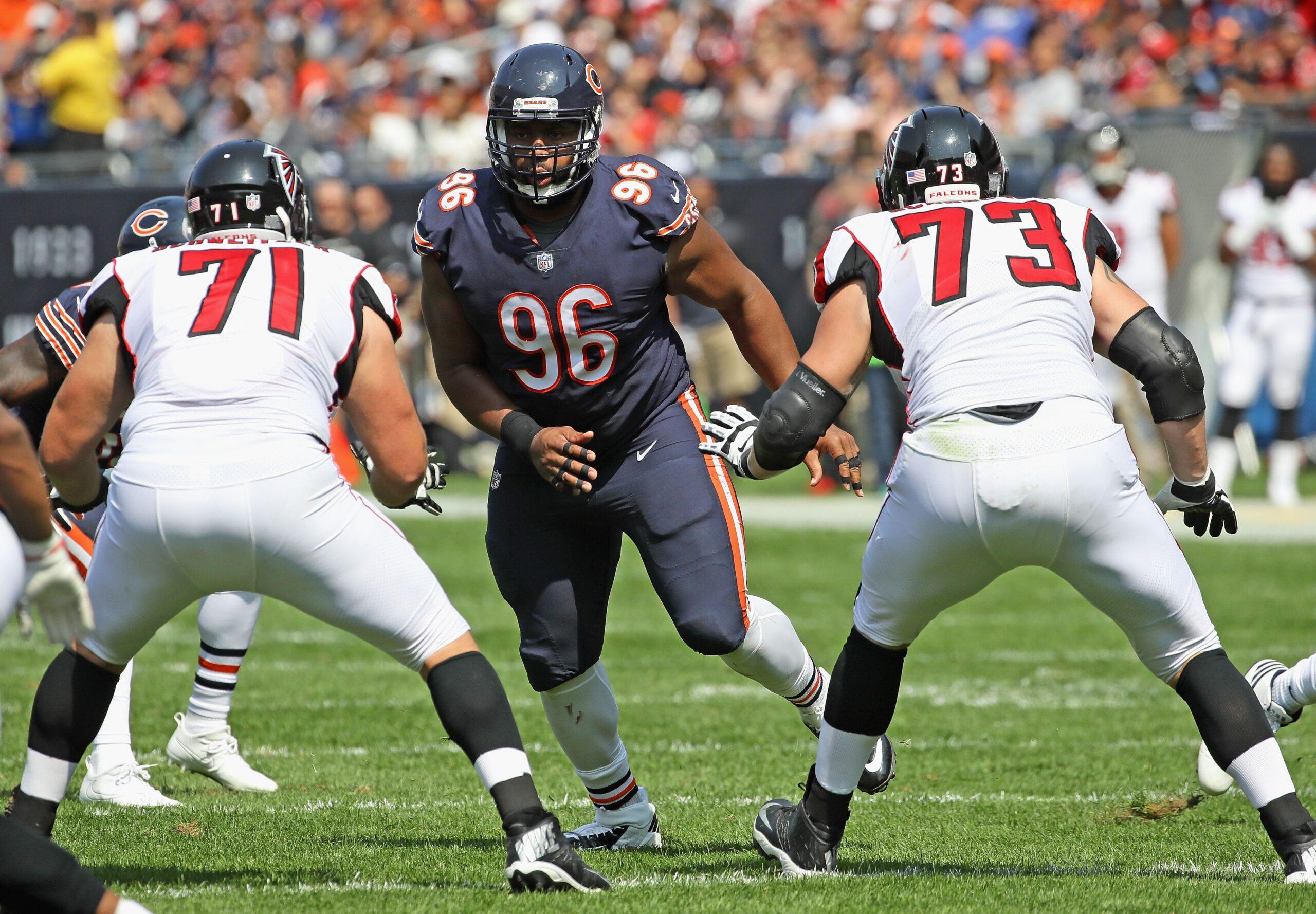
17. Chicago Bears
2017 Record: 5-11
2017 DVOA: 28th on offense; 14th on defense
Best-Case Scenario: Any time I tried to build a case for the Bears fielding a terrific defense this summer, one spot would give me pause: edge rusher. Chicago spent a small fortune on its offense this offseason and used a pair of second-round picks (receiver Anthony Miller and interior lineman James Daniels) to patch up its remaining holes on that side of the ball. That meant the roster was left without a pass rusher to couple with 2016 first-round pick Leonard Floyd. This defense features the bone-crushing Akiem Hicks on the line Danny Trevathan and 2018 top-10 pick Roquan Smith at inside linebacker. The Bears also retained all three of their starting corners from last season before they could flee on the open market—and Adrian Amos and Eddie Jackson might form the most exciting young safety pairing in the NFL. The concern was that this unit had a defined ceiling without another key presence on the edge. Enter Khalil Mack.
As the rumors about Oakland trading Mack started to grow louder over the past few weeks, Chicago seemed like a logical partner. The Bears had plenty of cap space available for 2019 and showed that they are motivated to squeeze every bit of value from quarterback Mitchell Trubisky’s rookie contract with their free-agent spending spree. The price for Mack—both in terms of the draft capital the team gave up in the package deal (first-round picks in 2019 and 2020, as well as future third- and sixth-rounders) and the money it doled out in his record-breaking extension (six years for $141 million with $90 million in guarantees)—was staggering, but he’s a staggering talent. Players of Khalil Mack’s ilk rarely become available. The Bears took a league-average unit and added one of the three best defenders in the NFL. This group now has all it needs to emerge as one of the best in football.
Before the Mack deal, the excitement around Chicago was rooted in how first-year head coach Matt Nagy and a revamped pass-catching corps could elevate Trubisky and the offense. In Kansas City, Nagy coordinated one of the league’s most creative offenses, a unit that featured myriad motions, personnel groupings, and spread concepts. Let’s just say the Bears didn’t have any of those in former coach John Fox’s tenure. Chicago’s passing offense was brutal in Trubisky’s rookie season, but the wholesale changes the franchise made to its quarterback’s support system offers reason to believe that Trubisky is a candidate to make a sophomore leap, much like Jared Goff did in his first season under Sean McVay.
The Bears had a capable ground game in 2017, led by Jordan Howard. This spring, Chicago added to its offensive war chest by bringing in move tight end Trey Burton to serve a Travis Kelce–like role, Allen Robinson to take over as the no. 1 receiver, and former Falcons speedster Taylor Gabriel to stretch the field. Throw in Miller and Tarik Cohen, whose skills resemble those of Tyreek Hill, and it’s not hard to envision massive improvement.
Worst-Case Scenario: It’s far from a guarantee that Trubisky will make the leap in his second season. For all the similarities between this year’s Bears and last year’s Rams, it’s worth remembering that not all offensive-minded rookie head coaches are going to excel like McVay. Nagy also comes from a team that had Andy Reid call the offensive plays until late last season. This fall brings a colossal increase in responsibility for Nagy beyond his duties as the head coach, and we’ve seen situations like this crash and burn in the past. If Trubisky doesn’t make dramatic improvements this year—which would be particularly cruel if Deshaun Watson and Patrick Mahomes take the league by storm—then any excitement about this team will have been for naught.
Chicago’s pass catchers should be a strength in 2018 after dragging the team down over the past couple of seasons, but concerns remain about the offensive line. The Bears could use an upgrade at right tackle sooner rather than later, and center Cody Whitehair took a step back last season after his strong showing as a rookie. (Shifting him among several spots on the line, a favorite tactic of the Fox-era coaching staff, certainly didn’t help.) Guard Kyle Long is a standout when healthy, but he’s had trouble avoiding injuries for much of his time in Chicago. Injury concerns also exist on defense: The Bears have been decimated on that side of the ball in recent seasons and don’t have much depth there.
Stat of Note: 32 percent. That’s how often the Chiefs ran the ball on first down in the first half of games last season, according to Football Outsiders, the lowest mark in the league. The 2017 Bears were at 46 percent, no. 1 in the NFL. The Bears are going from the league’s most predictable, outdated offense to a scheme run by forward-thinking coaches.
Breakout Player: Anthony Miller. The 5-foot-11 190-pounder was a touchdown machine at Memphis, with 37 scores over three seasons. He consistently impressed in fall camp, and it’s tough to imagine him not carving out a role opposite Robinson from the start.
Due to an editing error, an earlier version of this piece misidentified Bradley Chubb as Nick Chubb.
